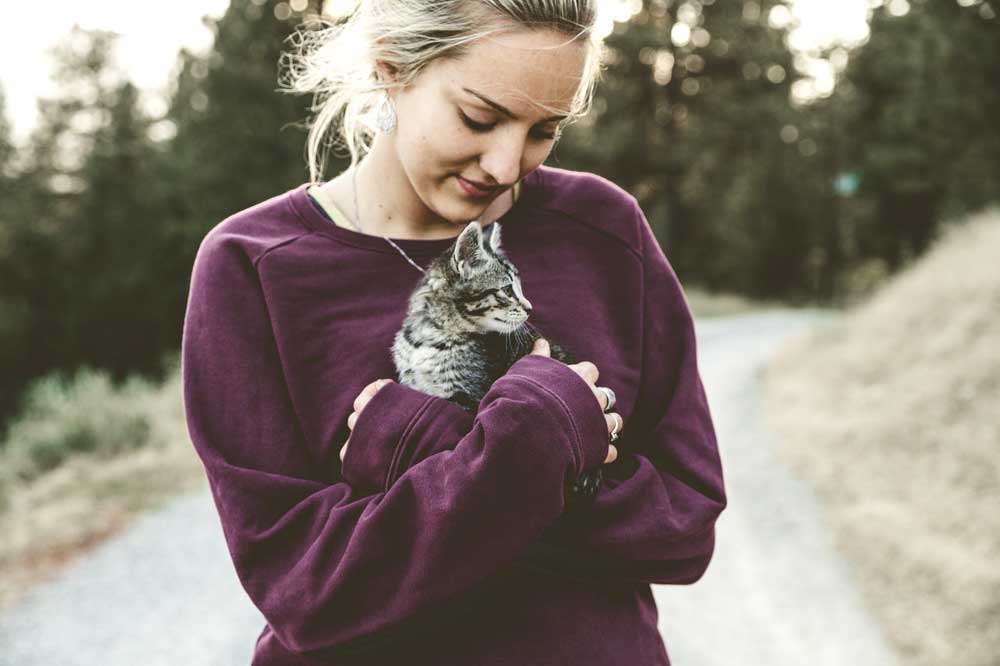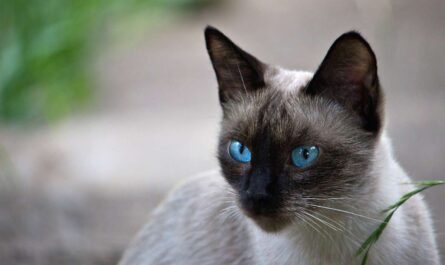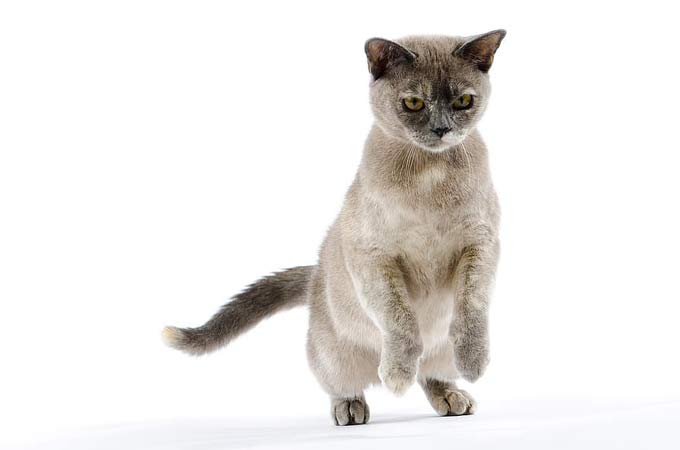Why do cats show their bellies? Cats, those enigmatic creatures, often perplex us with their behaviors. Among their curious habits is the occasional display of their bellies. While it may seem like an invitation for a belly rub, the reality is far more nuanced. Understanding why cats show their bellies requires delving into their complex psychology and evolutionary history.
Why Do Your Cats Show Their Bellies? Implied Reasons
The myriad reasons behind why cats show their bellies illustrate the complexity of feline behavior. From signaling trust and comfort to engaging in playful antics, each belly display offers a glimpse into the inner world of our feline friends. By decoding these behaviors, we can deepen our bond with cats and enrich our understanding of their fascinating nature. So, the next time your cat rolls onto its back and exposes its belly, take a moment to appreciate the subtle messages it’s conveying.
1. The Comfort Factor: A Den for Trust
Instinctual Behavior: Cats exhibit a fascinating array of behaviors, many of which are deeply ingrained in their instincts. One such behavior is the act of exposing their bellies, often interpreted as a sign of trust and comfort. In the intricate world of feline communication, body language plays a pivotal role, and the belly is a vulnerable area that holds significant meaning.
Trust and Vulnerability: When a cat exposes its belly, it’s akin to revealing a hidden treasure trove. In the wild, vulnerable areas like the belly are typically protected, only unveiled in moments of absolute security. By baring their soft underbellies, cats are potentially signaling that they feel safe and relaxed in their surroundings. It’s a vulnerable gesture, indicating a profound sense of trust in their environment and those around them.
Social Dynamics: Within the realm of feline social dynamics, trust is paramount. Cats are inherently cautious creatures, especially when it comes to revealing their vulnerabilities. Thus, when they sprawl out, invitingly displaying their bellies, it’s a testament to the trust they have built with their human companions or fellow felines. It’s a gesture that bridges the gap between instinctual behavior and social bonds, fostering a sense of intimacy and security.
2. Stretching: Limbering Up
Physical Wellness: Just like humans, cats benefit greatly from regular exercise, and stretching is a fundamental aspect of their daily routine. It’s not merely a leisurely stretch; it’s a vital practice that helps cats maintain their agility and flexibility. When a cat rolls onto its back, it’s not just a moment of relaxation; it’s an opportunity for a full-body stretch session.
Muscle Maintenance: Cats are incredibly agile creatures, thanks in part to their well-toned muscles. Stretching allows them to keep these muscles limber and supple, essential for executing their graceful movements with precision. By exposing their bellies during stretching sessions, cats ensure that every muscle group receives the attention it needs, promoting overall physical wellness.
Mind-Body Connection: The act of stretching isn’t just beneficial for the body; it also plays a role in mental relaxation. For cats, stretching is a holistic practice that engages both body and mind. As they extend their limbs and luxuriate in the stretch, they enter a state of tranquility, reinforcing the connection between physical well-being and mental equilibrium.
3. Playfulness: A Game of Cat and Mouse
Instinctual Play: At the core of every feline is a hunter, and even in domestic settings, this instinct remains deeply ingrained. The playful display of the belly could be seen as a cunning tactic, reminiscent of a predator toying with its prey. By enticing their human companions to reach out for a belly rub, cats are not only indulging in physical play but also satisfying their innate hunting instincts.
Interactive Engagement: Cats are masters of manipulation, expertly orchestrating scenarios to suit their whims. When they playfully present their bellies, it’s an invitation for interaction, a subtle yet effective way to engage their human counterparts. The ensuing game of cat and mouse, with its quick movements and playful swats, strengthens the bond between cat and owner, enriching their relationship through shared moments of fun and spontaneity.
Exploration and Boundaries: Through playful belly displays, cats also explore boundaries and test the limits of trust. It’s a delicate dance between vulnerability and control, as they gauge their human companion’s response. In this playful exchange, both parties learn to navigate each other’s cues and communicate effectively, fostering a deeper understanding and mutual respect.
4. Temperature Regulation: Cool as a Cucumber
Physiological Adaptation: Cats are marvels of physiological adaptation, finely tuned to thrive in various environments. Their bellies, sparsely furred compared to the rest of their bodies, serve a crucial function in temperature regulation. Like built-in cooling pads, these areas facilitate heat dissipation, crucial for maintaining optimal body temperature.
Strategic Positioning: When a cat lounges on its back, exposing its belly to the air, it’s not just a whimsical stretch; it’s a strategic maneuver. By allowing air to circulate around this area, cats effectively enhance the cooling process. This behavior is particularly pronounced on warmer days when cats seek respite from the heat. So, while it may seem like a casual posture, it’s a calculated response to environmental conditions.
Behavioral Flexibility: Despite their reputation for aloofness, cats are surprisingly adaptable creatures. Their penchant for finding the most comfortable spots extends to their posture choices. Whether it’s curling up in a cozy ball or sprawling out to catch a breeze, cats demonstrate remarkable flexibility in adjusting their behavior to suit their immediate needs. So, the next time you catch your feline companion lounging belly-up, appreciate the intricate blend of instinct and adaptation at play.
5. Social Communication: Speak with Your Belly
Feline Communication: Within the intricate tapestry of feline society, communication reigns supreme, and body language serves as the primary mode of expression. When a cat displays its belly, it’s akin to broadcasting a message to those around it. Each subtle movement conveys a wealth of information, offering insights into the cat’s emotional state and intentions.
Submissive Gestures: In the lexicon of feline body language, the belly reveal holds multifaceted meanings. One interpretation is that of submission, a gesture of vulnerability aimed at defusing potential conflicts. By exposing their soft underbellies, cats signal to other felines or humans that they harbor no aggressive intentions. It’s a peace offering, a non-verbal plea for harmony and understanding.
Trust and Invitation: Conversely, the belly display can also be viewed as an invitation for social interaction, a gesture of trust extended to those deemed worthy. When a cat bares its belly, it’s essentially saying, “I trust you enough to let my guard down.” It’s an invitation to forge deeper bonds and engage in mutual companionship, rooted in trust and mutual respect.
6. Attention-Seeking Behavior: The Center of the Universe
Magnetic Charm: Cats possess an uncanny ability to captivate the attention of those around them, and they’re well aware of this magnetic allure. When a cat sprawls out and exposes its belly, it’s a deliberate act of soliciting attention, positioning itself as the undisputed center of the universe. In that moment, nothing else matters but the cat and its whims.
Demand for Affection: Cats are connoisseurs of affection, and they’re not shy about demanding it on their terms. By presenting their bellies in such a dramatic fashion, cats are essentially saying, “Pay attention to me!” It’s a subtle yet effective way of asserting their presence and ensuring that they remain the focal point of their human companion’s world.
Bonding Ritual: Behind the theatrics of attention-seeking behavior lies a deeper desire for connection. When a cat clamors for attention with a belly display, it’s not just about fulfilling a fleeting desire; it’s about strengthening the bond between cat and owner. In these moments of shared affection, trust deepens, and the bonds of companionship grow ever stronger.

7. Sensory Exploration: A World of Scents
Olfactory Perception: For cats, the world is a tapestry woven with scents, each telling a story of its own. Their keen sense of smell guides them through life, providing invaluable information about their surroundings and fellow felines. Within their bellies lie scent glands, reservoirs of pheromones that serve as potent communication tools in the feline realm.
Territorial Marking: When a cat rolls onto its back and exposes its belly, it’s not just a casual stretch; it’s a strategic move in the game of territorial dominance. By releasing pheromones from their belly glands, cats leave behind invisible markers, subtly staking their claim on the environment. It’s a silent declaration of ownership, a way of saying, “This space is mine.”
Communication and Connection: Pheromones are more than just territorial markers; they’re also vehicles of communication and connection. When cats leave their scent behind, they’re broadcasting messages to other felines in the vicinity, conveying information about their presence, mood, and intentions. It’s a form of social currency, facilitating interactions and reinforcing social bonds within the feline community.
8. Comfortable Sleeping Position: Sweet Dreams
Relaxation Mastery: Cats are renowned for their ability to achieve relaxation nirvana in virtually any setting. Whether perched precariously on a windowsill or nestled in a cozy corner, they possess an innate knack for finding comfort wherever they go. When a cat chooses to sleep on its back, it’s a testament to their unparalleled mastery of relaxation.
Trusting Environment: The belly-up sleeping position is the ultimate display of trust and contentment. It’s a vulnerable posture, leaving the cat exposed to potential dangers. Yet, when a cat sleeps in this position, it speaks volumes about their perception of safety and security in their surroundings. It’s a signal that they feel completely at ease, free to surrender to the sweet embrace of slumber.
Optimal Comfort: Beyond trust and security, the belly-up sleeping position offers unmatched comfort. It allows cats to fully stretch out their limbs, relieving any tension accumulated throughout the day. With their bellies exposed to the air, cats can regulate their body temperature more effectively, ensuring a restful and rejuvenating sleep experience.
9. Trust Building: Building Bridges
Foundation of Relationships: Trust forms the bedrock of any meaningful relationship, be it between humans or between humans and their feline companions. When a cat exposes its belly, it’s extending an olive branch of trust, inviting its human counterpart into its inner circle. This gesture, seemingly simple yet profound, opens the door to deeper connections and mutual understanding.
Reciprocal Affection: Trust-building is a two-way street, requiring mutual effort and understanding. When a cat displays its belly, it’s seeking affirmation and validation from its human companion. By responding with gentle affection and respect for their boundaries, humans can reinforce this trust, cementing the bonds of companionship and camaraderie.
Non-Verbal Communication: In the silent language of cats, actions speak louder than words. The belly reveal is a non-verbal communication tool, conveying emotions and intentions with eloquent simplicity. By tuning into these subtle cues and responding appropriately, humans can bridge the gap between species, forging relationships built on trust, empathy, and mutual respect.
10. Habitual Behavior: Creatures of Routine
Rituals and Routines: Cats thrive on predictability and routine, finding comfort in the familiar rhythms of daily life. Certain behaviors, once established, become ingrained habits that shape their interactions with the world around them. Whether it’s mealtime rituals or grooming routines, these habits provide a sense of stability and security in an otherwise unpredictable world.
Learned Responses: A cat’s behavior is often shaped by past experiences and the consequences of their actions. If a cat has received positive reinforcement for exposing its belly in the past, they’re likely to continue doing so, viewing it as a successful strategy for garnering attention and affection. Conversely, negative experiences may lead to more guarded behavior, as cats learn to protect themselves from perceived threats.
Environment and Conditioning: Environmental factors play a significant role in shaping a cat’s behavior and responses. A nurturing and supportive environment can encourage trust-building behaviors, fostering a strong bond between cat and owner. Conversely, stressful or traumatic experiences may lead to defensive behaviors, requiring patience and understanding to overcome. Understanding these nuances is key to cultivating a harmonious relationship with our feline companions.
11. Health Indicator: A Sign of Well-Being
Physical Manifestation: Cats are masters of disguise when it comes to masking pain or discomfort. In times of illness or distress, they instinctively curl up, shielding their vulnerable areas from potential harm. Conversely, a cat confidently displaying its belly is often indicative of robust health and vitality. It’s a visual reassurance that all is well in their feline world. Business – Money Making – Marketing – E-commerce
Body Language Insights: The body language of cats offers invaluable insights into their overall well-being. When a cat sprawls out and exposes its belly with casual abandon, it’s a subtle yet powerful declaration of good health. It’s a testament to their physical comfort and emotional contentment, allowing their human companions to breathe a sigh of relief knowing their furry friend is thriving.
Trust and Comfort: Furthermore, a cat’s willingness to expose its belly can also be viewed as a measure of trust and comfort in their environment. A cat who feels secure in their surroundings is more likely to adopt relaxed postures, including the belly-up position. It’s a tangible expression of the bond between cat and owner, built on a foundation of trust, love, and mutual understanding.
12. Individual Personality: Cat-titude Matters
Unique Personalities: Just like humans, cats possess distinct personalities and temperaments that shape their behaviors and preferences. Some cats are unabashed lovers of belly rubs, relishing the attention and affection showered upon them. Others, however, may view belly-touching with suspicion or disdain, preferring to keep their most vulnerable spot out of reach. Cat accessories on Amazon
Cat-titude Variations: Understanding a cat’s individual personality, or “cat-titude,” is crucial in deciphering their motivations and behaviors. While one cat may eagerly present their belly as a sign of trust and affection, another may view it as a violation of personal space. It’s a reminder that each cat is a unique individual, deserving of respect and understanding in their own right.
Bonding Opportunities: Embracing and respecting these personality differences fosters a deeper bond between cat and owner. By honoring their preferences and boundaries, humans can build trust and mutual respect, laying the groundwork for a harmonious and fulfilling relationship. Whether your cat is a belly-rub aficionado or a staunch belly-guardian, appreciating their individuality is key to nurturing a strong and lasting connection.
Other Interesting Articles
- How to Help Your Cat Overcome Fears in 13 Strategic Steps
- 13 Easy Tricks To Teach Your Cat: Basic Feline Training Guide
- How To Train Your Cat: 15 Easy Steps To Teach New Things
- Why Do Cats Have Tails? 4 Fun Facts You Didn’t Know
- 16 Simple Ways To Establish A Stronger Bond With Your Cat
- How To Train Your Cat/Kitten To Sit: Steps, Command, Guide
- Cat Giving Birth: From Your Feline Pregnancy to Kitten Care
- Fading Kitten Syndrome: Age, Causes, Symptoms, Treatment
- Kitten Bottle Feeding: Chart, Tips, Recipe, Challenges, Guide
- Cat Pregnancy: Timeline, Signs, Labor, Behavior, Stages
- 16 Silent Killers of Cats Every Pet Owner Must Be Aware Of
- Do Mother Cats Discipline Their Kittens? A Guide To Owners
- How To Take Care of A Kitten 6 Weeks Old: A 7-Step Guide
- How To Tell If Your Cat is Trying to Hurt You: A To-Do Guide
- How To Tell If Your Cat Has Tapeworms: What You Can Do
- How To Tell If My Cat is in Pain After Neutering: What To Do
- How To Get A Cat To Trust You Fast: Signs, Tips, Techniques
- 12 Signs Your Cat is a Boy: Tips To Distinguish A Male Cat
- Single Kitten Syndrome: Age, Signs, Symptoms, Treatments
- How To Tell If Your Cat Can’t See Well: What You Can Do


